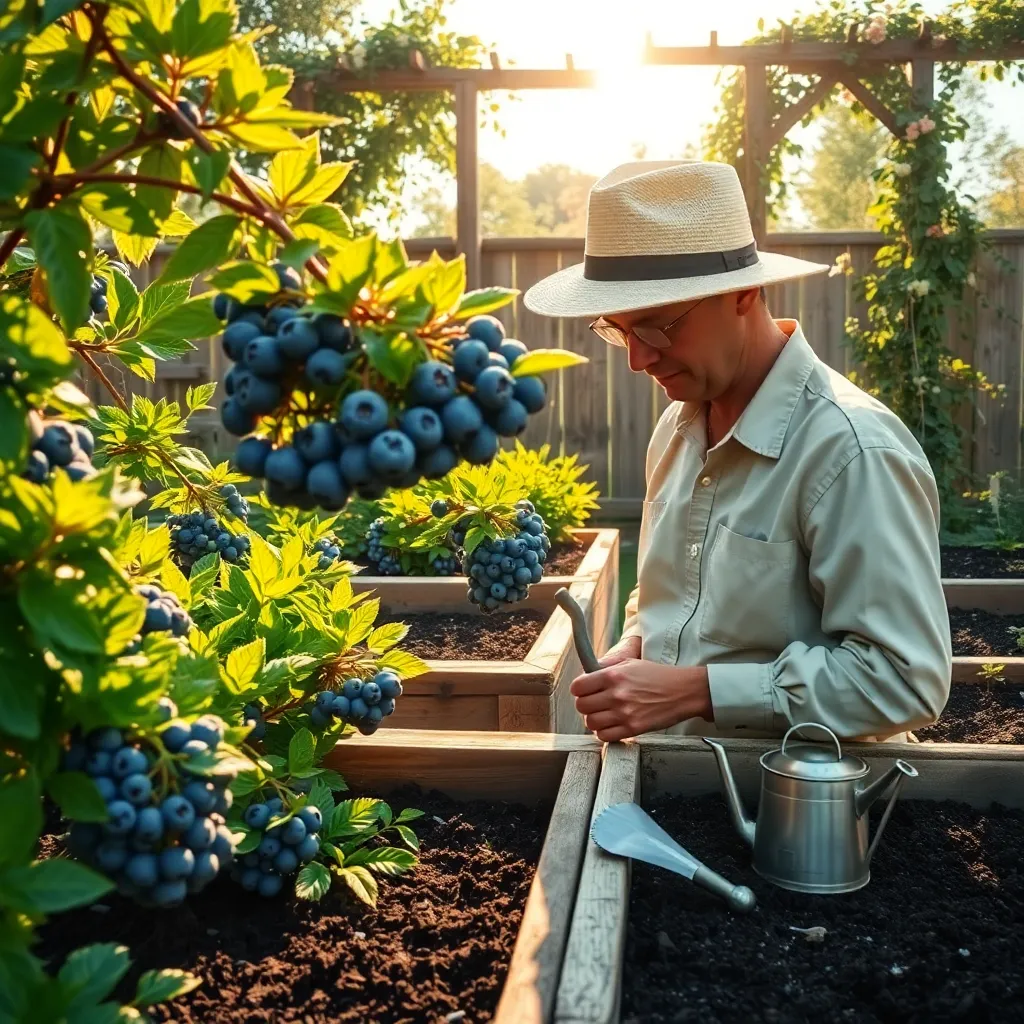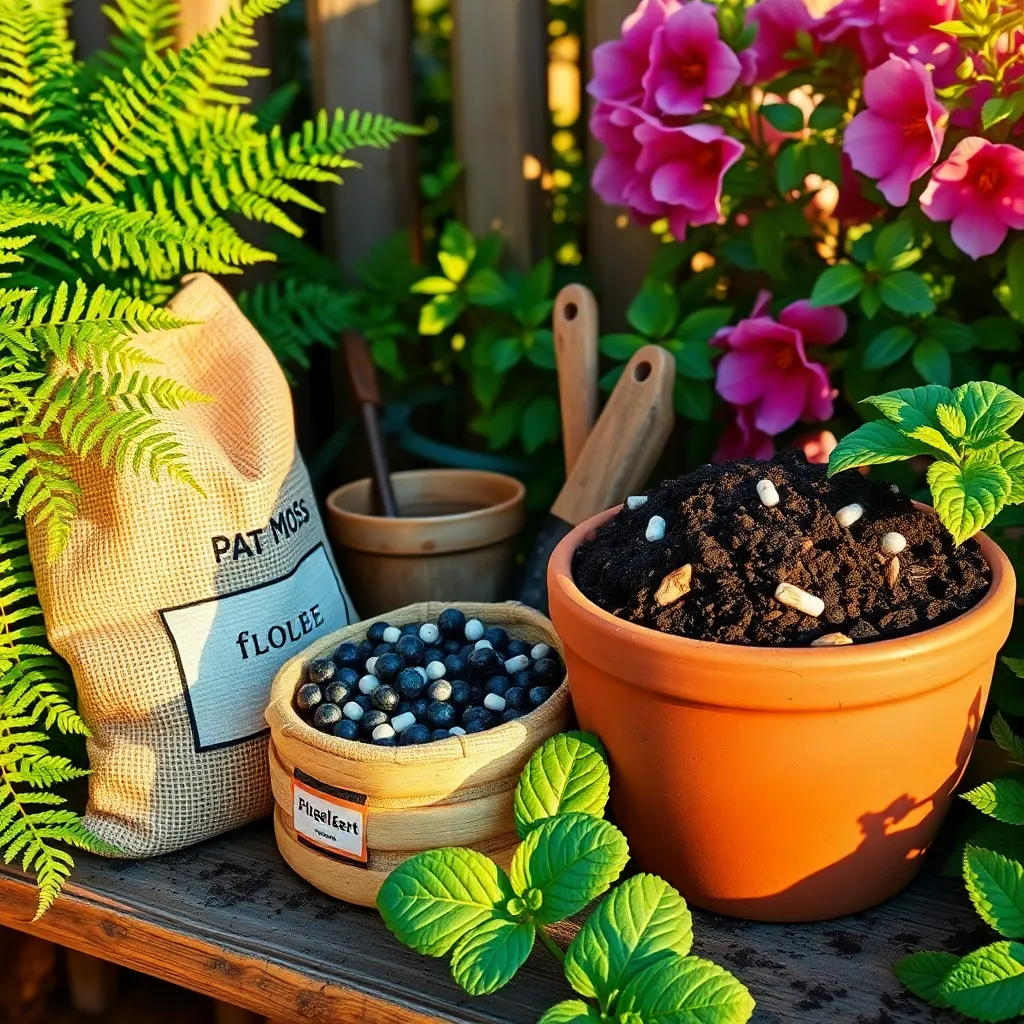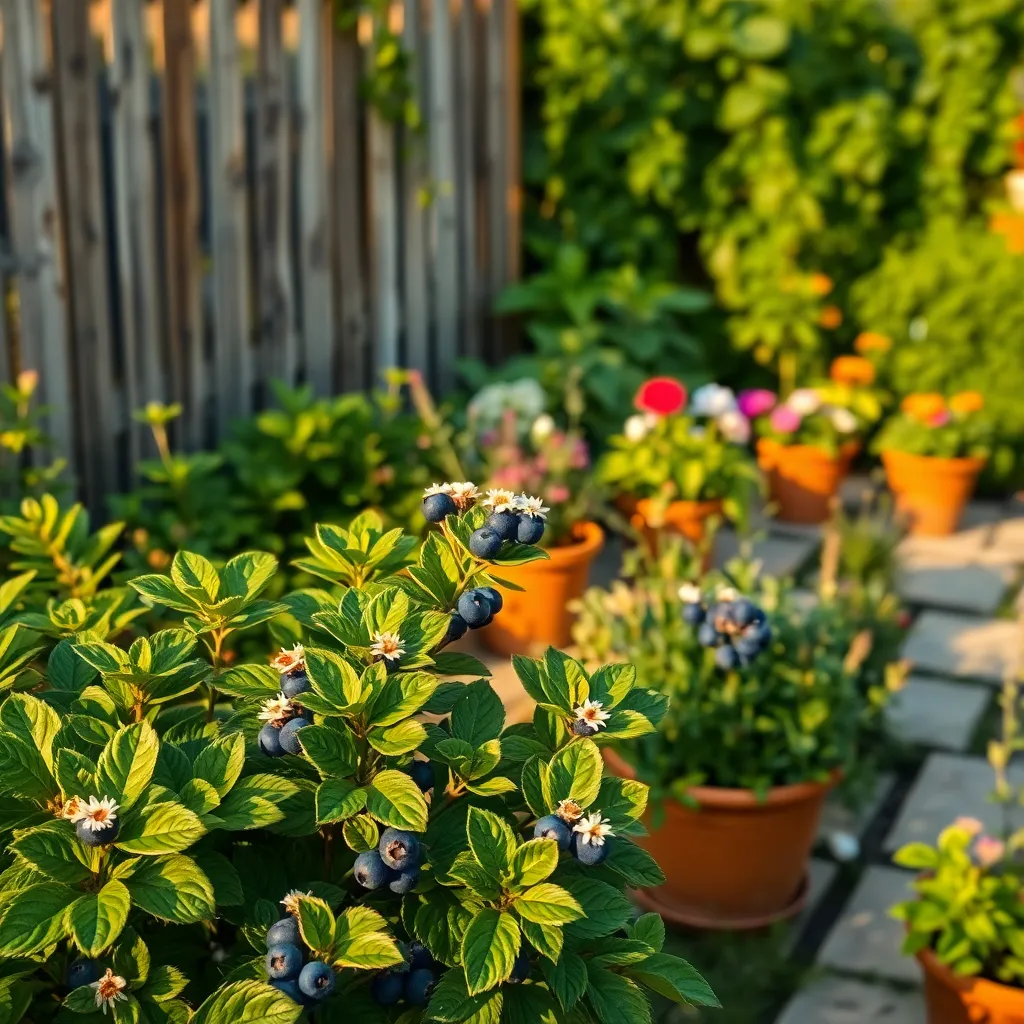There’s something truly magical about the thought of plucking a handful of sun-warmed blueberries from your very own garden. Whether you’re a seasoned gardener with years of dirt under your fingernails or a newbie just getting your hands dirty, growing blueberries at home is a delightful journey into the world of edible gardening that promises not just fresh fruit but also a sense of accomplishment.
Blueberries aren’t just a treat for the taste buds; they’re a powerhouse of nutrients and a versatile addition to your garden. In this article, you’ll discover everything from selecting the right blueberry variety to understanding soil requirements and mastering pruning techniques. By the end, you’ll be well-equipped to nurture these charming bushes, ensuring a bountiful harvest season after season.
Select Ideal Blueberry Variety

Choosing the right blueberry variety for your garden can significantly impact your success. It’s essential to consider your climate, soil type, and the space available when selecting a variety.
For those in colder regions, look for varieties like ‘Northblue’ or ‘Patriot’ that thrive in lower temperatures. Gardeners in warmer climates might opt for ‘Misty’ or ‘Sunshine Blue’, which are more heat-tolerant and adaptable.
Blueberries prefer acidic soil with a pH between 4.5 and 5.5, so conducting a soil test is a critical first step. If needed, you can amend your soil with pine bark or sulfur to achieve the right acidity.
Ensure that your chosen variety matches the available sunlight in your garden, as blueberries require full sun for optimal growth. Watering is another important factor, with blueberries needing about 1 to 2 inches of water per week, especially during the fruiting season.
Prepare Acidic Soil Mixture

To cultivate blueberries successfully, creating an acidic soil mixture is crucial. Blueberry plants thrive in soil with a pH between 4.5 and 5.5, ensuring optimal nutrient absorption.
Begin by selecting a high-quality, well-draining potting mix as your base. To increase acidity, incorporate materials like sphagnum peat moss into the mix, which can lower the pH effectively.
For those looking to adjust existing garden soil, consider adding elemental sulfur several months before planting. This slow-acting amendment gradually decreases soil pH, providing a more hospitable environment for blueberries.
Advanced gardeners might also use acidifying fertilizers specifically designed for acid-loving plants. These fertilizers not only maintain soil acidity but also supply essential nutrients for vigorous growth.
As a final step, always test the soil pH using a reliable kit before planting. This ensures that you have created the ideal environment for your blueberries, setting the stage for a thriving home garden.
Plant in Sunny Location

Blueberries thrive in locations that receive full sunlight for at least six to eight hours a day. Choose a sunny spot in your garden to ensure your blueberry plants produce the maximum yield and develop sweet, flavorful berries.
Placing your blueberry plants in a sunny location also helps with disease prevention. Direct sunlight dries moisture on the leaves, reducing the risk of fungal infections that can occur in damp conditions.
To protect your berries from scorching, consider planting them where they receive morning sunlight and partial shade in the afternoon. This setup guards against intense midday heat, which can stress the plants and affect berry quality.
For gardeners in hotter climates, a light mulch can help retain soil moisture and keep roots cool under full sun. Use organic mulches like pine needles or wood chips, which also help maintain the acidic soil conditions that blueberries prefer.
Water Consistently and Adequately

Blueberries require consistent and adequate watering, especially during their first year of growth. Aim to provide them with about an inch of water per week, which can be achieved through rainfall or supplemental irrigation.
It’s important to water deeply, ensuring that moisture reaches the plant’s root zone. This encourages roots to grow deeper, enhancing the plant’s stability and drought resistance.
Utilize mulch to help retain soil moisture, which is crucial during hot, dry spells. Apply a 2-3 inch layer of organic mulch, such as pine bark or straw, around the base of the plant, keeping it a few inches away from the stem.
For experienced gardeners, consider using drip irrigation systems to provide consistent moisture directly to the root zone. This method not only conserves water but also minimizes the risk of fungal diseases by keeping foliage dry.
Prune for Healthier Growth

Pruning is a critical aspect of maintaining healthy blueberry plants, as it encourages robust growth and abundant fruit production. It’s best to prune your blueberries during their dormant season, typically in late winter or early spring, before new growth begins.
Begin by removing dead, damaged, or diseased branches to improve air circulation and sunlight penetration. This simple practice not only enhances the plant’s health but also reduces the risk of fungal diseases.
Next, focus on thinning out older canes to promote the growth of new, vigorous ones. Canes older than six years should be pruned back, as they tend to produce fewer berries.
For optimal results, aim to maintain a balanced structure by keeping a mix of older and newer canes. Strive for a bush that has 6 to 8 sturdy canes of varying ages, which will help ensure consistent fruiting each year.
Conclusion: Growing Success with These Plants
In nurturing the delicate art of growing blueberries at home, we’ve uncovered five essential relationship concepts: the importance of creating a nurturing environment, the need for consistent care and attention, the value of patience and understanding, the role of adaptability in times of change, and the joy of reaping the fruits of your labor. Each of these principles not only applies to your budding blueberry garden but also translates seamlessly into cultivating thriving human connections.
As your next actionable step, take a moment to reflect on one relationship in your life that could benefit from a little more attention and care. Consider how you might apply these principles to foster growth and harmony in that relationship.
Remember, relationships, like gardens, flourish when tended to with love and intention. Bookmark this article now to ensure you have a handy guide to revisit whenever you need a little inspiration or guidance.
Looking forward, envision the success of your relationships as they blossom and deepen, just like your thriving blueberry plants. With dedication and love, you’ll find your connections flourishing in unexpected and delightful ways. Here’s to fruitful relationships and bountiful harvests!







